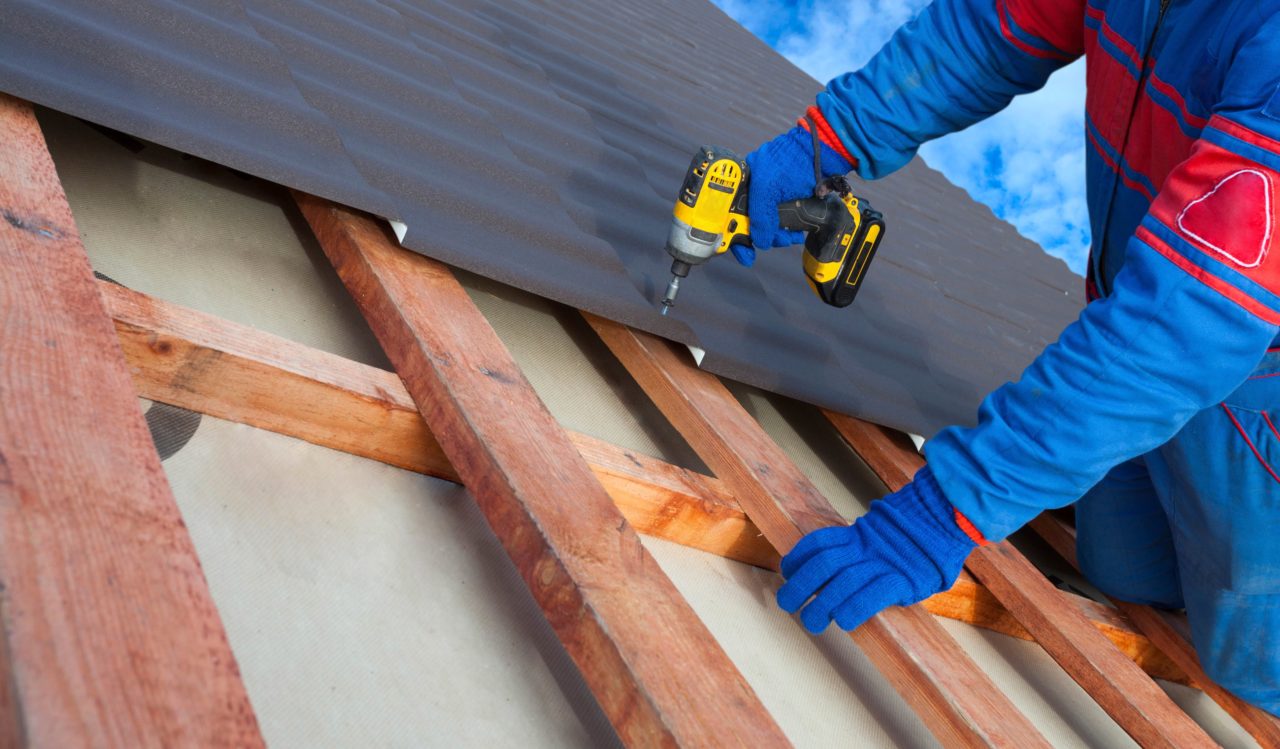Thinking of installing a metal roof? As one of the nation’s favorite roofing trends right now, we’re starting to see more and more people install metal roofs in their homes. You can pick from many different styles, there are many colors to choose from, and they’re also known for being durable.
However, they’re also known for their tendency to be installed incorrectly, leading to an overall weak roof that can be easily damaged by the elements.
One of the biggest challenges when installing a metal roof is the location of the screws used for securing the metal roof to the structure of your home. When done correctly, your metal roof will last for decades. Do this wrong, and you’ll have a weak roof that will leak, come loose, and ultimately put your home in danger. So where exactly should you be securing your metal roof?
Using the right screws for metal roofing
Before we even talk about the screw placement, we need to cover the screws that are actually used first. For most metal roofs, a screw that has a rubber washer and a metal cap is usually the best choice. This is because the rubber washer helps to create a better seal so that rainwater can’t leak into your home. Having a metal cap is always important since it makes the screw a lot easier to remove and install.
Tips for screwing down metal roofing
It’s also a good idea to think about how you can screw down metal roofing. When tightening your screws, it’s important to be as patient as possible and to get a feel for how difficult it is to turn the screw itself. For example, if you’re finding it hard to turn the screw anymore and the washer is being compressed too tightly, then it can damage both the screw and the metal underneath it while also compromising the seal.
If you’re not accustomed to DIY then it can be difficult to judge when a screw is too tight. So here are a couple of tips on how to correctly screw down metal roofing:
- Make sure the screw is straight when you start to screw it. If it’s slanted or sideways, then it’s going to damage the roof and can cause leaks and other damage.
- Remove metal shavings once you have screwed them in so that it doesn’t cause corrosion spots.
- Try to avoid powerful drills and impact drivers. A screw gun provides enough force without causing potential damage.
- For screw location and placement, stick to the flat areas. This makes it much easier for the screw to go in and penetrate the material beneath, making it much more secure as opposed to the top of the rib.
- When in doubt about how many screws to use, more is generally better as long as they’re spaced evenly so that it can secure the metal roof to the substrate below.
By following these tips, you’ll have a much easier time finding the best placement for screws in metal roofing and also know how to install them correctly.

